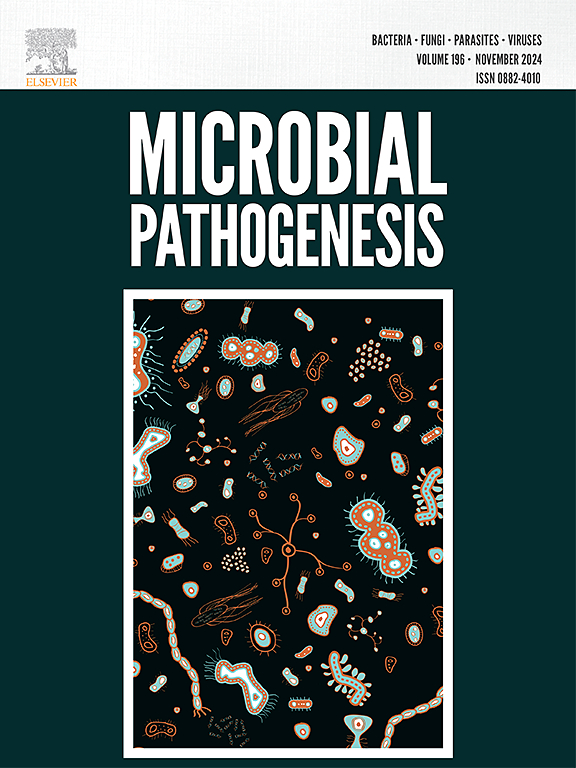Synergistic effect of the combination of phenolic compounds and tobramycin on the inhibition of Pseudomonas aeruginosa biofilm
IF 3.3
3区 医学
Q3 IMMUNOLOGY
引用次数: 0
Abstract
Bacteria coordinate gene expression in a cell density-dependent manner using a communication process called quorum sensing (QS). The expression of virulence factors, biofilm formation and enzyme production are examples of QS-regulated phenotypes that can interfere with food quality and safety. Due to the importance of these phenotypes, the inhibition of bacterial communication as an anti-virulence strategy is of great interest. This work aimed to evaluate the effect of phenolic compounds on the inhibition of biofilm formation by Pseudomonas aeruginosa PAO1, using concentrations that do not interfere in bacterial growth. The synergistic effect of rosmarinic acid, baicalein, curcumin and resveratrol with tobramycin and between the phenolics themselves was evaluated. The tested combinations proved to be a good strategy for reducing the dose of antibiotics used in treatments and obtaining satisfactory results against P. aeruginosa biofilms. The combination of the four compounds at the highest concentration (500 μM) completely inhibited biofilm formation. The obtained results contribute to understanding the effect of phenolic compounds on QS inhibition, which may help to define the mechanism of inhibition, in addition to expanding the biotechnological potential of these compounds for future applications in the food, pharmaceutical and medical fields.
酚类化合物与妥布霉素的组合对铜绿假单胞菌生物膜的协同抑制作用。
细菌通过一种名为 "法定量感应"(QS)的交流过程,以一种依赖细胞密度的方式协调基因表达。毒力因子的表达、生物膜的形成和酶的产生都是 QS 调控表型的例子,它们可能会影响食品质量和安全。由于这些表型的重要性,抑制细菌通讯作为一种抗病毒策略备受关注。这项研究旨在评估酚类化合物对铜绿假单胞菌 PAO1 形成生物膜的抑制作用,采用的浓度不会干扰细菌的生长。研究评估了迷迭香酸、黄芩苷、姜黄素和白藜芦醇与妥布霉素以及酚类化合物之间的协同作用。事实证明,所测试的组合是减少治疗中抗生素使用剂量的良好策略,对铜绿微囊桿菌生物膜的抗菌效果令人满意。最高浓度(500 μM)的四种化合物组合完全抑制了生物膜的形成。所获得的结果有助于了解酚类化合物对 QS 抑制作用的影响,这可能有助于确定抑制机制,此外还能扩大这些化合物的生物技术潜力,使其未来应用于食品、制药和医疗领域。
本文章由计算机程序翻译,如有差异,请以英文原文为准。
求助全文
约1分钟内获得全文
求助全文
来源期刊

Microbial pathogenesis
医学-免疫学
CiteScore
7.40
自引率
2.60%
发文量
472
审稿时长
56 days
期刊介绍:
Microbial Pathogenesis publishes original contributions and reviews about the molecular and cellular mechanisms of infectious diseases. It covers microbiology, host-pathogen interaction and immunology related to infectious agents, including bacteria, fungi, viruses and protozoa. It also accepts papers in the field of clinical microbiology, with the exception of case reports.
Research Areas Include:
-Pathogenesis
-Virulence factors
-Host susceptibility or resistance
-Immune mechanisms
-Identification, cloning and sequencing of relevant genes
-Genetic studies
-Viruses, prokaryotic organisms and protozoa
-Microbiota
-Systems biology related to infectious diseases
-Targets for vaccine design (pre-clinical studies)
 求助内容:
求助内容: 应助结果提醒方式:
应助结果提醒方式:


